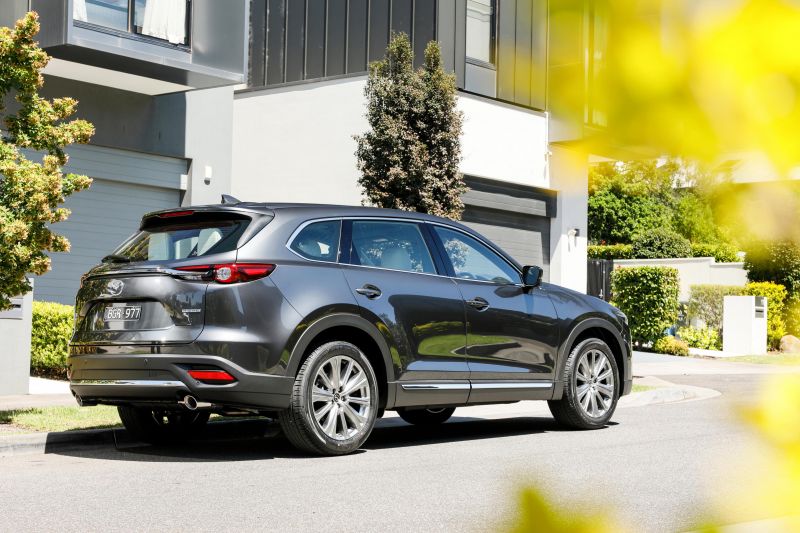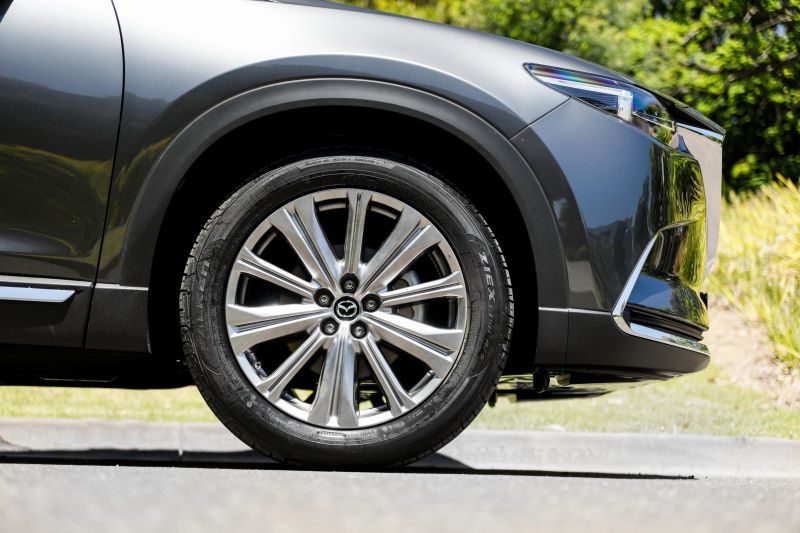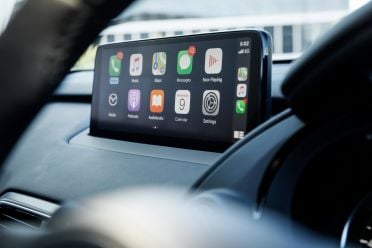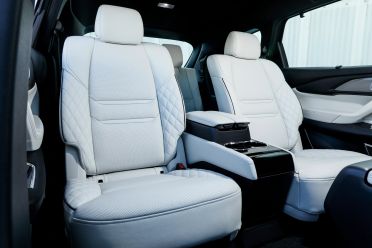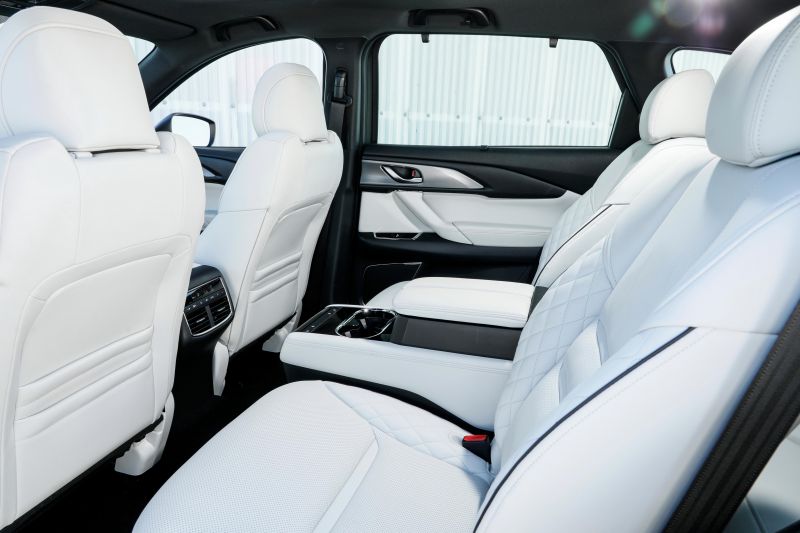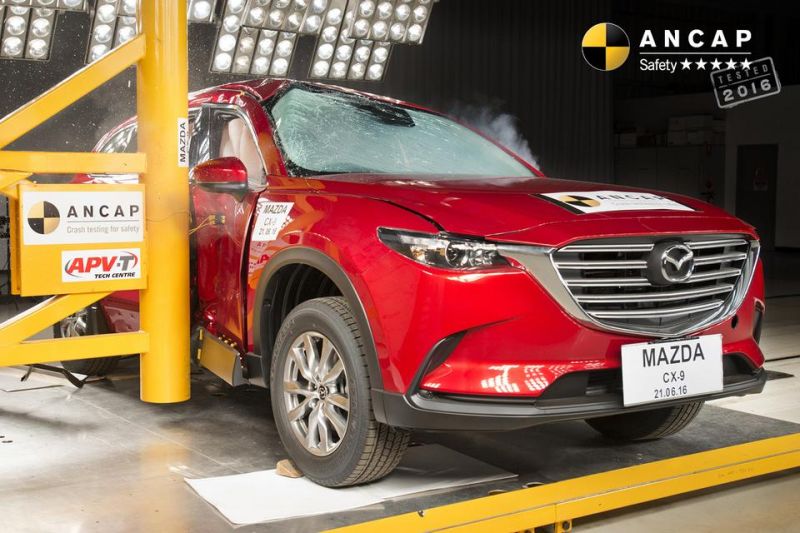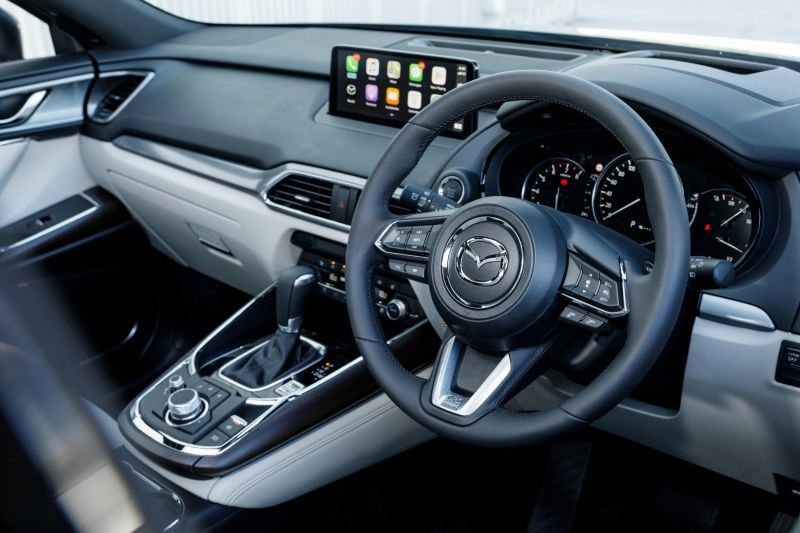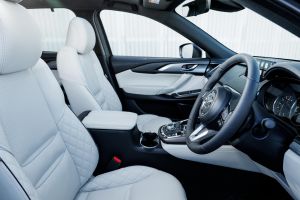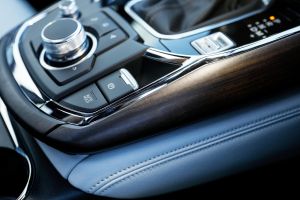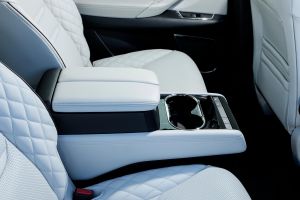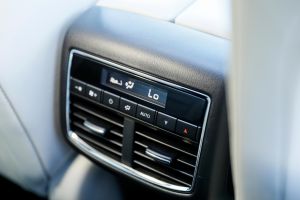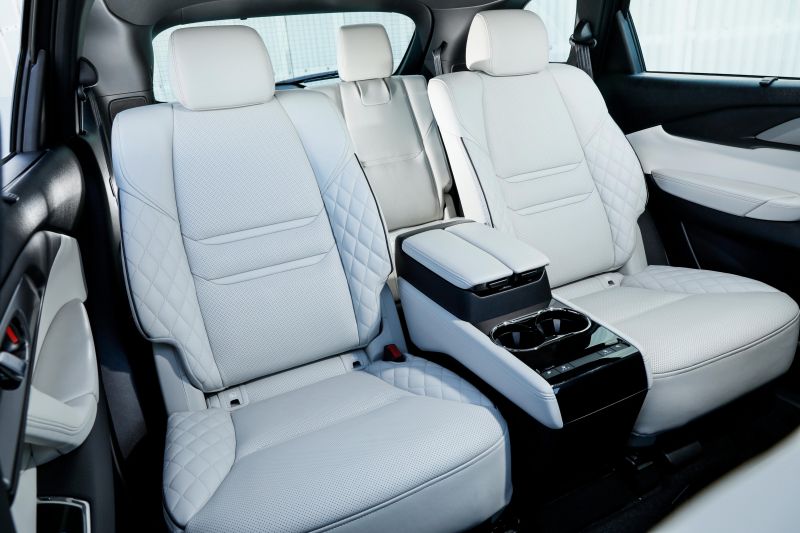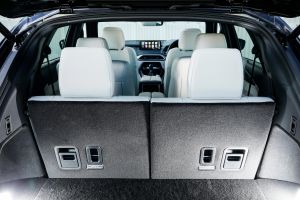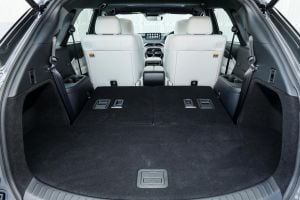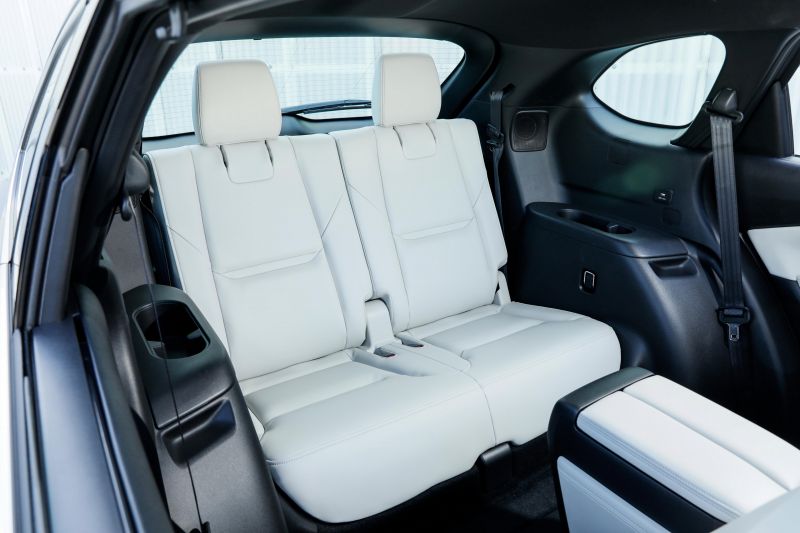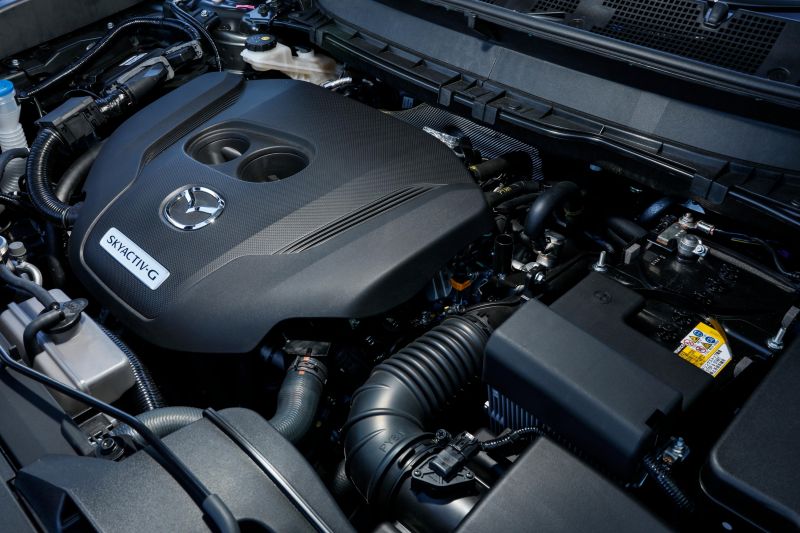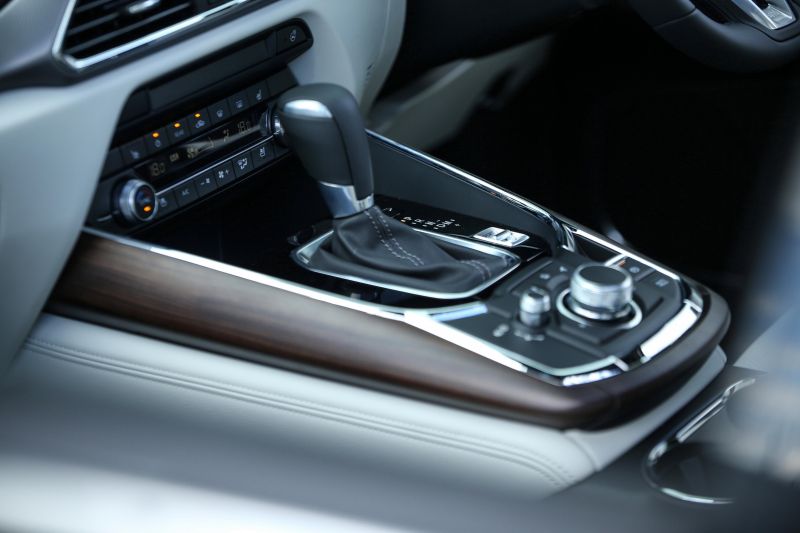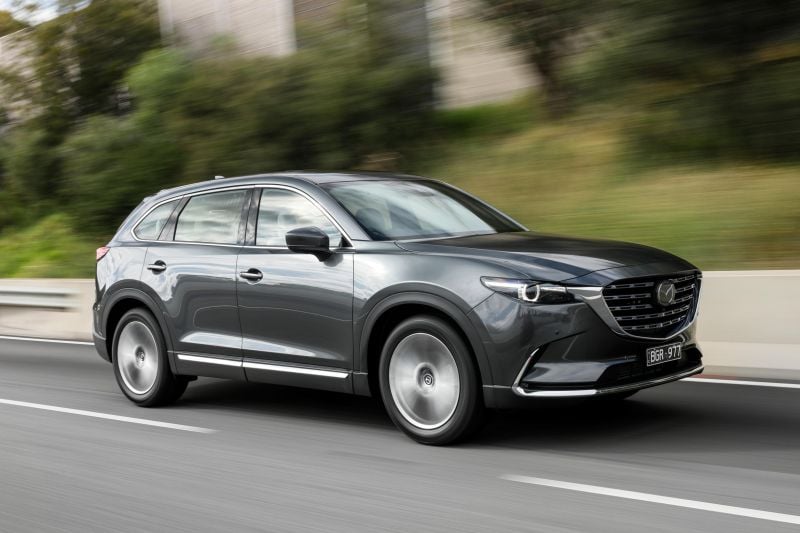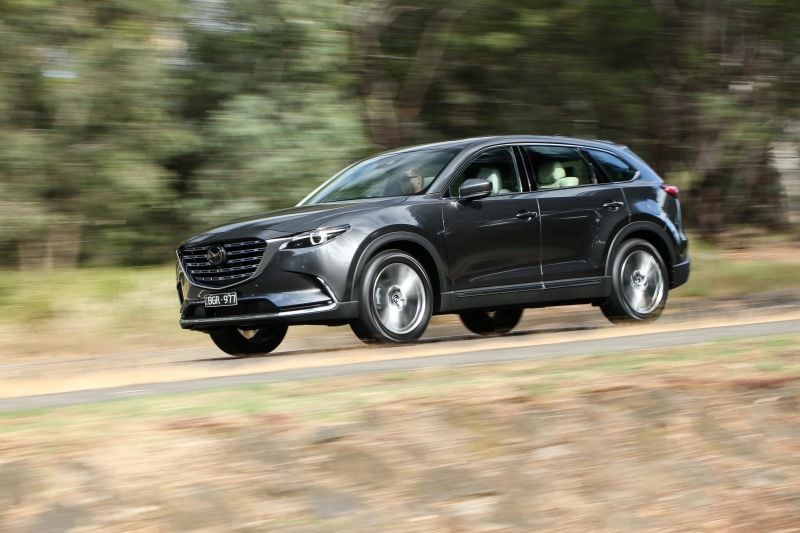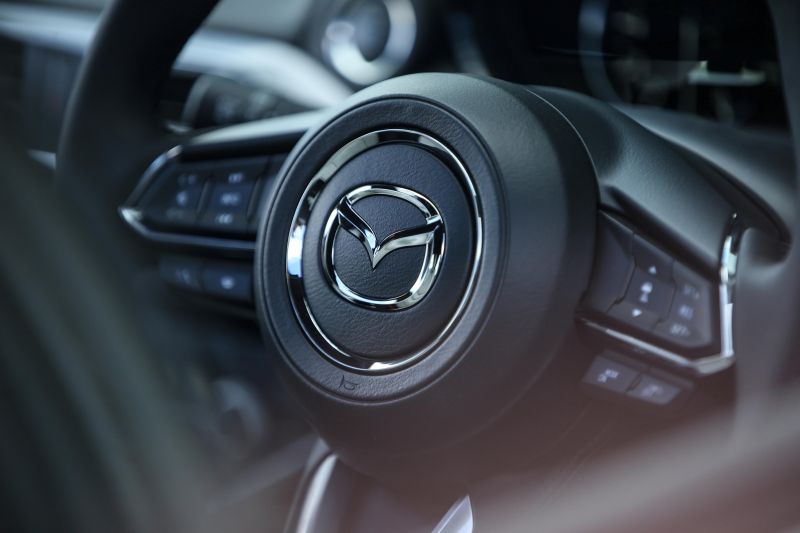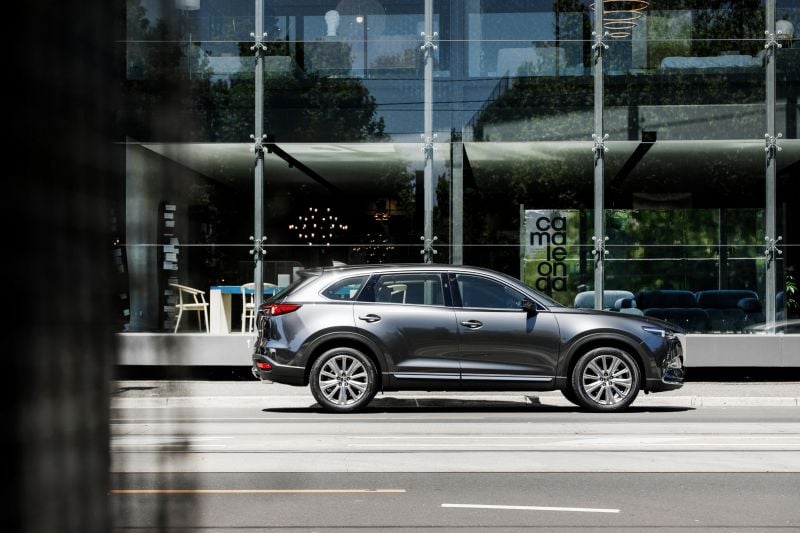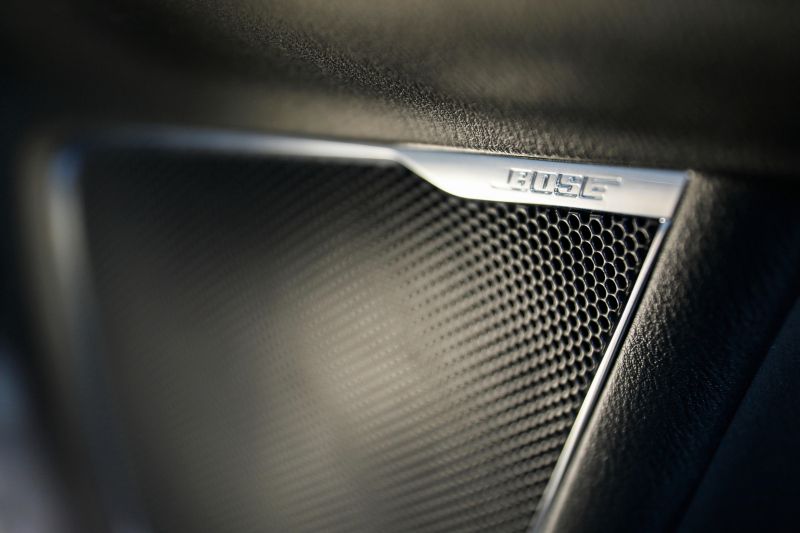The Mazda CX-9 has long been one of Australia’s favourite family SUVs, and for 2021 the Japanese brand is pushing its flagship into luxury territory.
While the wider range received technology and equipment updates, the cherry on top of the MY21 line-up is the new CX-9 Azami LE, which features a luxe six-seat cabin layout with second-row captain’s chairs.
With a price eclipsing the $70,000 barrier the CX-9 is well on its way into luxury car territory, within striking distance of premium-branded vehicles like the Lexus RX and Volkswagen Touareg.
Does Mazda’s big, American-focused three-row crossover cut it as a ‘premium for the people’ proposition?

How much does the Mazda CX-9 Azami LE cost?
For 2021 the Mazda CX-9 kicks off at $45,990 before on-road costs for the entry-level Sport FWD, climbing to $73,875 before on-roads for the car we have on test here: the Azami LE AWD.
Before you ask, yes that’s a lot of money for a mainstream family SUV. On the road, you’re looking at $76,985 drive-away before options according to the company’s website.
What does it compete with?
This six-seat CX-9 is Mazda Australia’s flagship, and is at a price point that competes with a range of large SUVs, including the Hyundai Palisade Highlander (from $75,000), the Kia Sorento GT-Line (from $61,990 drive-away), the Lexus RX350L Luxury (from $85,000), and the Volkswagen Touareg 170TDI (from $81,490).
At this end of the market there’s plenty of premium models within a (distant) touching distance of the CX-9 Azami LE, though adding $20,000 to the budget for an Audi Q7 or Volvo XC90 might be better spent on a family holiday or a second car.
What do you get?
Key features in the Azami grade include:
- Adaptive LED headlights
- 7.0-inch information display
- Heated steering wheel
- Frameless rear-view mirror
- Ventilated front seats
- Surround-view camera
- Real wood trim
- LED centre console ambient lighting
- Quilted Nappa leather upholstery (brown or white nappa leather)
Opting for the new CX-9 Azami LE adds the following:
- Power-adjustable, heated and ventilated second-row captain’s chairs
- Second-row centre console
That’s on top of the extensive list of equipment fitted to lower grades of the CX-9, including:
- 10.25-inch infotainment system with satellite navigation, Android Auto and Apple CarPlay
- Qi wireless smart phone charging
- 20-inch alloy wheels with 255/55 tyres
- Hands-free power tailgate
- Power tilt-and-slide sunroof
- Leather seats (black, natural stone or beige)
- 12-speaker 294W Bose sound system
- 10-way power driver’s seat with memory
- Heated second row seats (outboard only)
- Third-row USB ports
While the second-row captain’s chairs may not necessarily sound like they’re worth the circa-$3000 price hike over the equivalent CX-9 Azami AWD, the electrically-adjustable second row with centre console really lift the ambience and offer an interior configuration usually reserved for the luxury segments.
Currently, the only rival to offer a similar option at this price point is the Hyundai Palisade Highlander, which can be had in seven-seat configuration (2+2+3) with second-row captain’s chairs featuring heating and ventilation.
Further upmarket you could once buy a Volvo XC90 Excellence with a similar second row layout but it was strictly four-seat only and beyond $150,000, while the likes of the Bentley Bentayga and Rolls-Royce Cullinan will charge you hundreds of thousands more for a conceptually similar rear cabin.
Now, obviously the Mazda isn’t quite on the same level of luxe as the aforementioned boutique SUVs, but it’s cool to think how unique the CX-9 is in offering such a layout.
It’s worth noting the Kia Sorento and Carnival offer a similar second-row option to the Palisade in overseas markets like South Korea and the US, but unfortunately they aren’t offered Down Under… yet.
Is the Mazda CX-9 Azami LE safe?
The CX-9 scored a five-star ANCAP rating in 2016, based on the old scoring system and test criteria.
It achieved an overall score of 35.87 out of 37.00, including perfect side impact and pole test scores as well as 14.87 out of 16.00 in the frontal offset assessment.
Dual frontal, side-chest and side curtain airbags are standard across the range. All three seating rows (outboard seats) are covered by the curtain airbags and all seats have advanced seat belt reminders.
All 2021 Mazda CX-9 models also come with the following assistance systems:
- Front and rear autonomous emergency braking with night time pedestrian detection
- Blind spot monitoring
- Rear cross-traffic alert
- Driver attention monitoring
- Traffic sign recognition
- Lane departure warning
- Lane-keep assist
What is the Mazda CX-9 Azami LE like on the inside?
I’ll be honest, I forgot just how nice the CX-9 is to sit in – especially in its flagship trim.
The swathes of nappa leather, real wood trim inserts and the overall design and layout of the cabin are a clear indicator of why this car has been so popular for so many years.
Everything you touch is finished in leather or leatherette and has a nice padded feel, and the ergonomics are well sorted. Sure, it may lack the design flair of some of its luxury equivalents, but it does feel very nice and expensive.
Up front there’s full electric adjustment with memory for the driver and passenger as well as heated/ventilation for the first-row pews. Oddly, the steering column isn’t electrically-operated and there’s no base cushion extension either – my long legs were left wanting for a little more support towards the backs of my knees.
The new 10.25-inch navigation system running Mazda’s latest interface is a huge step up over the old model. It’s high resolution and offers plenty of functionality including inbuilt satellite navigation, wired Apple CarPlay and Android Auto, DAB+ radio, and it’s hooked up to a 12-speaker Bose-branded premium audio system.
It’s much quicker and upmarket-looking than the previous-generation MZD Connect system still used on lower CX-9 grades, and the display is a better match for rival systems in both the mainstream and luxury segments.
Storage in the first row is pretty good, with a cubby under the centre stack that doubles up as a wireless phone charger, large cupholders between the front seats as well as a large centre storage cubby under the front-centre armrests.
There’s still only a small tilt-slide moonroof rather than a full panoramic roof like you might get on a top-spec Sorento or Santa Fe/Palisade, but other than that you’re not really left wanting.
It’s a similar story in the second row, which now has the added visual drama of individual captain’s chairs and a centre console in place of the second-row middle seat. Essentially, Mazda has recreated the front row in the back for added comfort.
Leg and headroom are good, and the electric adjustment for each individual seat is a nice touch, as is the heating and ventilation controls as well as an extra climate control zone controlled by the panel behind the centre console.
Overall, comfort is pretty decent. We noticed the same issue with under-thigh support as the front, and you can’t adjust the angle of the seat base like you can at the front so if you recline the backrest all the way you end up having your legs really low and the base of the seatback digging into your lower back. Not super comfortable or elegant, really.
The double centre armrest in the back conceals a large storage cubby with USB charge outlets to keep devices charged. A slide-out draw adds to the second-row practicality.
Further back again, the CX-9 remains one of the better vehicles in the class for carrying passengers in the third row.
As with other variants, the Azami LE offers decent head and kneeroom for even adults, though we’d still suggest limiting time spent back there for those over six-foot tall.
There’s also limited outward visibility through the rear side windows and no face-level air vents, meaning you’re likely to get complaints on hot days.
With the third row in place, the CX-9 offers 230L of cargo capacity, expanding to 820L with it folded – though this measurement is to the roof, not the cargo cover line. Under the boot floor is a space-saver spare wheel.
For parents with multiple kids, the second-row chairs offer ISOFIX and top-tether points, while both seats in the third row offer top-tether points too.
What’s under the bonnet?
A tried and tested 2.5-litre four-cylinder turbo petrol engine generating 170kW of power at 5000rpm and 420Nm of torque at 2000rpm.
In Azami LE guise, drive is sent exclusively to an on-demand all-wheel drive system via a six-speed automatic transmission. Front-wheel drive is standard on lower trim levels.
Mazda says the CX-9 will happily run on regular 91 RON unleaded, and all-wheel drive models claim to use 9.0L/100km on the combined cycle.
Our highway-biased test loop didn’t return realistic figures for day-to-day driving, and the hot conditions meant the cars were often left running at idle with the air-conditioner on for a period of time before we set off.
We’ve found previously you can expect 7.0-8.0L/100km with extended highway use and 12.0-13.0L/100km with urban-focused driving.
It’s certainly not the most economical three-row SUV out there, but should you want the economy of a diesel, Mazda will sell you the dimensionally similar CX-8 with its twin-turbo diesel four too.
How does the Mazda CX-9 Azami LE drive?
Oddly, before this media drive I hadn’t spent a whole lot of time behind the wheel of the CX-9, and coming away from it I don’t think I ever grasped just how good it is.
Considering the current-generation CX-9 launched locally back in 2017, and was first revealed at the 2015 Los Angeles motor show, it’s now got a lot of newer competition it has to fend off.
During our extended highway drive between Melbourne and Broadford (and back a day later), I was super impressed with the CX-9’s touring abilities from the ride comfort and road holding to the luxury levels of insulation from road and wind noise. It’s up there with the likes of Lexus in that regard.
Keep in mind the Azami LE is riding on big 20-inch alloys with lower profile 255/50 rubber, too.
Comfy and Quiet
The CX-9 offers luxury levels of refinement and ride comfort in town and on the open road
The engine settles silently into the background at a cruise, and there’s plenty of torque reserves for a quick overtake if need be. Being a six-speeder, the 2.5-litre Skyactiv-G turbo unit is humming away around 2100rpm at 110km/h – an eight speed automatic would not only reduce revs at a cruise for even further reduced NVH, but also aid highway fuel economy.
As always has been the case, the big Mazda doesn’t fall apart once you hit some bends.
The light, direct steering and excellent body control means the big SUV shrinks around you and feels more like a wagon than a high-riding SUV. It’s not quite ‘sporty’, but it’s definitely one of the better SUVs of this size and price to steer up a winding B-road.
That’s all despite the lack of adaptive dampers with a proper firm setting as well as a front-drive bias. Very impressive indeed.
Unlike most luxury rivals and some other vehicles in the mainstream classes, the CX-9 doesn’t offer a range of drive modes bar the Sport rocker switch on the centre tunnel that holds gears and sharpens throttle response. There’s also paddle-shifters mounted behind the steering wheel, but it’s no MX-5.
Around town the CX-9 does an admirable job of soaking up the lumps and bumps of suburban streets, and the tight handling noted earlier translates to relatively easy manoeuvring in school drop-off zones and shopping centre car parks.
Brake performance was decent enough though there is a vagueness when you first hit the pedal that doesn’t always inspire confidence. Once you add a bit more input and the stoppers grab, there’s strong, predictable brake performance as you’d want in a family car.
We took a stint in the second row during the media drive as well to see if the rear captain’s chairs are all that. They look great and are reasonably comfortable, and having electric adjustment with individual heating and ventilation is a nice touch, though we found it could use more adjustment for the angle of the seat base and the seat ventilation was a bit weak.
Legroom and headroom is otherwise the same as the seven-seat CX-9, though you’ll have better shoulder room where the middle seat would normally be and the centre console has a storage cubby and armrests for added long-distance comfort.
How much does the Mazda CX-9 Azami LE cost to run?
The CX-9 is covered by Mazda Australia’s five-year, unlimited-kilometre warranty with premium roadside assistance for the same period.
Servicing is required every 12 months or 10,000 kilometres – whichever comes first. Most rivals offer longer 15,000km intervals, so that’s worth considering if you do a lot of mileage.
The first five visits will cost $363, $408, $363, $408 and $363 respectively, totalling $1905 for the first 60 months or 50,000km.
It’s also worth noting those advertised prices don’t account for consumable items such as cabin air filters ($105 every 40,000km) and brake fluid ($96 every 24 months/40,000km).
CarExpert’s take on the Mazda CX-9 Azami LE
Mazda says more than 30 per cent of CX-9 buyers are already opting for the Azami variants, and we don’t blame them.
The top-spec SUV offers luxury levels of comfort, features, materials and driving refinement. And while its price is now a stone’s throw from some premium-branded rivals, it’s more than up to the tast.
Now with the Azami LE, there’s an element of exclusivity in the fact there’s such a high-end interior concept available for relatively attainable money, and the CX-9 is far more elegant looking than the bold, brash Hyundai Palisade.
For a smidge under $80,000 on the road, there’s not a lot of other cars you can get that are such great all-rounders with as much class.
Click the images for the full gallery
MORE: Mazda CX-9 news and reviews
MORE: Everything Mazda

